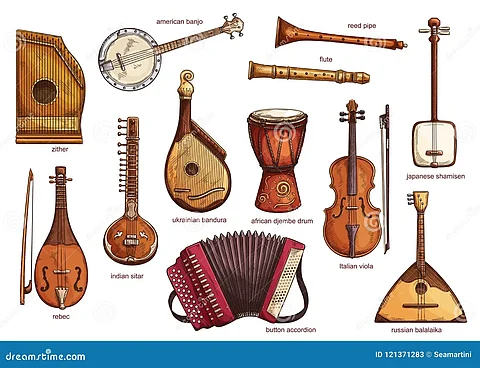
- Home
- Live Blog
- Breaking News
- Top Headlines
- Cities
- NE News
- Sentinel Media
- Sports
- Education
- Jobs

The cultural revival of lost Indian musical heritage is a significant movement aimed at preserving and promoting the traditional Indian instruments. Several traditional instruments, which were once part of India’s vibrant music scene, have been forgotten or become less commonly used due to changes in musical tastes, technological advancements, and modernization.
Key Aspects of the Revival Movement:
Research and Documentation: Scholars and musicians are working on researching and documenting the history and characteristics of these instruments. Some instruments were played in specific regional or courtly traditions, while others were more widespread in classical music forms. Many instruments’ techniques and playing styles are being revived through books, oral traditions, and recordings. The Indian classical music instruments revival is an important part in restoring the old glory of the musical traditions of the country.
Restoration of Instruments: A significant part of the revival process involves the restoration of the physical instruments. In some cases, these instruments are handcrafted by artisans using traditional techniques. For example, the Rudra veena, Saarangi, and Pungi have seen restoration efforts, allowing musicians to learn and perform on the authentic instruments.
Performance and Concerts: Musicians are actively performing traditional Indian music instrumental in concert settings, showcasing the unique sound and heritage. Special concerts and festivals are organized to bring attention to these instruments and their place in Indian classical and folk music.
Educational Initiatives: Many music schools and universities are offering courses and training in the use of traditional instruments. Some artists are even taking on the role of “gurus” to pass down their knowledge to the younger generation, ensuring that the art forms associated with these instruments are not lost.
Revival of Traditional Music Forms: Instruments like the Chimta, Ektara, and Khatak, once prominent in folk and devotional music, are being reintroduced into contemporary performances to re-establish their cultural significance. Efforts are also underway to blend these instruments with modern genres, allowing regional Indian musical traditions to evolve in new and exciting ways.
Examples of revived traditional Indian instruments:
Rudra Veena: A complex, ancient string instrument, popular in the Dhrupad style of classical music. It is one of the oldest Indian musical instruments.
Saarangi: A bowed, stringed instrument often associated with North Indian classical music.
Pungi: The folk wind instrument, famous for its role in snake-charming performances, is being revived in performances of traditional folk music.
Morchang: A jaw harp used in Rajasthan and Gujarat, played during folk music performances.
Dilruba: A string instrument similar to the violin, once used in classical and folk performances.
ALSO WATCH: